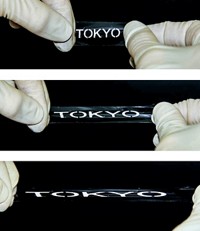Advertisement
Grab your lab coat. Let's get started
Welcome!
Welcome!
Create an account below to get 6 C&EN articles per month, receive newsletters and more - all free.
It seems this is your first time logging in online. Please enter the following information to continue.
As an ACS member you automatically get access to this site. All we need is few more details to create your reading experience.
Not you? Sign in with a different account.
Not you? Sign in with a different account.
ERROR 1
ERROR 1
ERROR 2
ERROR 2
ERROR 2
ERROR 2
ERROR 2
Password and Confirm password must match.
If you have an ACS member number, please enter it here so we can link this account to your membership. (optional)
ERROR 2
ACS values your privacy. By submitting your information, you are gaining access to C&EN and subscribing to our weekly newsletter. We use the information you provide to make your reading experience better, and we will never sell your data to third party members.
Materials
Sticky Tape Sorts Nanotubes
Nanoscientists unveil sticky polymer films that selectively separate metallic and semiconducting SWNTs
by Lauren K. Wolf
June 13, 2011
| A version of this story appeared in
Volume 89, Issue 24

Taking a cue from Nobel Prize-winning physicists who prepared graphene with adhesive tape, a research team has developed sticky polymer films to separate metallic and semiconducting single-walled carbon nanotubes (Angew. Chem. Int. Ed., DOI: 10.1002/anie.201101700). Fabrication of these nanotubes typically yields a mixture of the two types. In the past, researchers separated them by selectively destroying one nanotube type or by using solution-based methods such as dielectrophoresis. Researchers led by Jin Zhang of China’s Peking University have now demonstrated a less labor-intensive separation of the nanotubes using polydimethylsiloxane thin films modified with either amine or phenyl groups. When pressed onto an array of nanotubes and peeled away, amine-terminated tapes bind to and remove semiconducting nanotubes. Likewise, phenyl-terminated tapes remove metallic nanotubes. Stanford University’s Zhenan Bao, who has sorted nanotubes with chemically functionalized surfaces, says methods like this one that harness the power of molecule-nanotube interactions “will be highly desirable for low-cost electronics.”




Join the conversation
Contact the reporter
Submit a Letter to the Editor for publication
Engage with us on Twitter